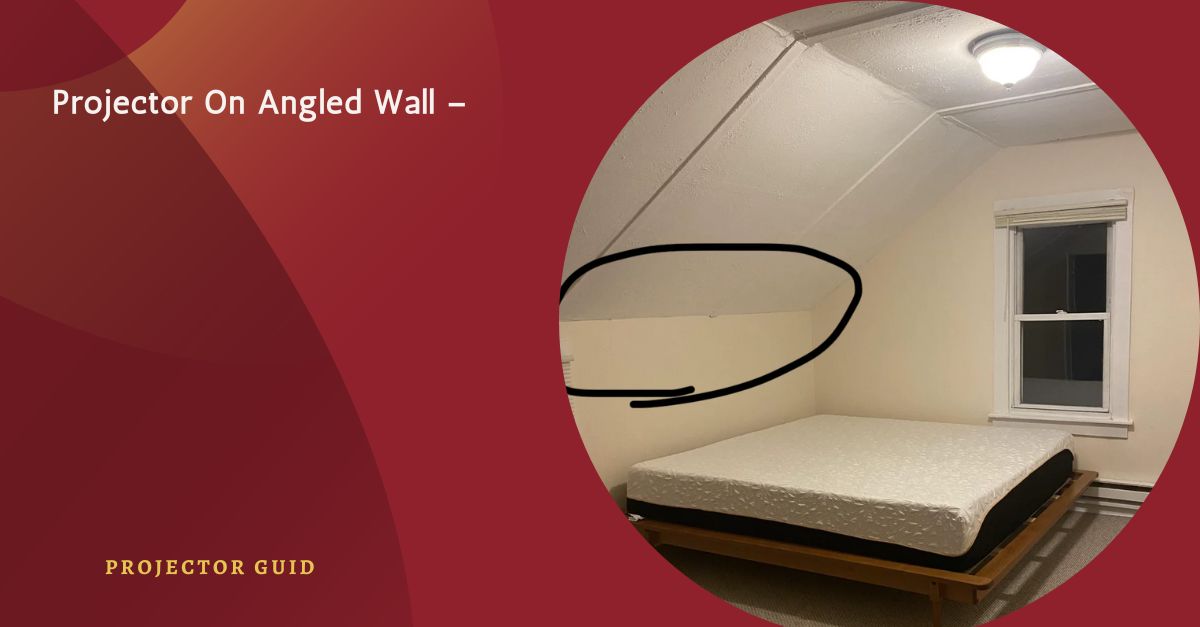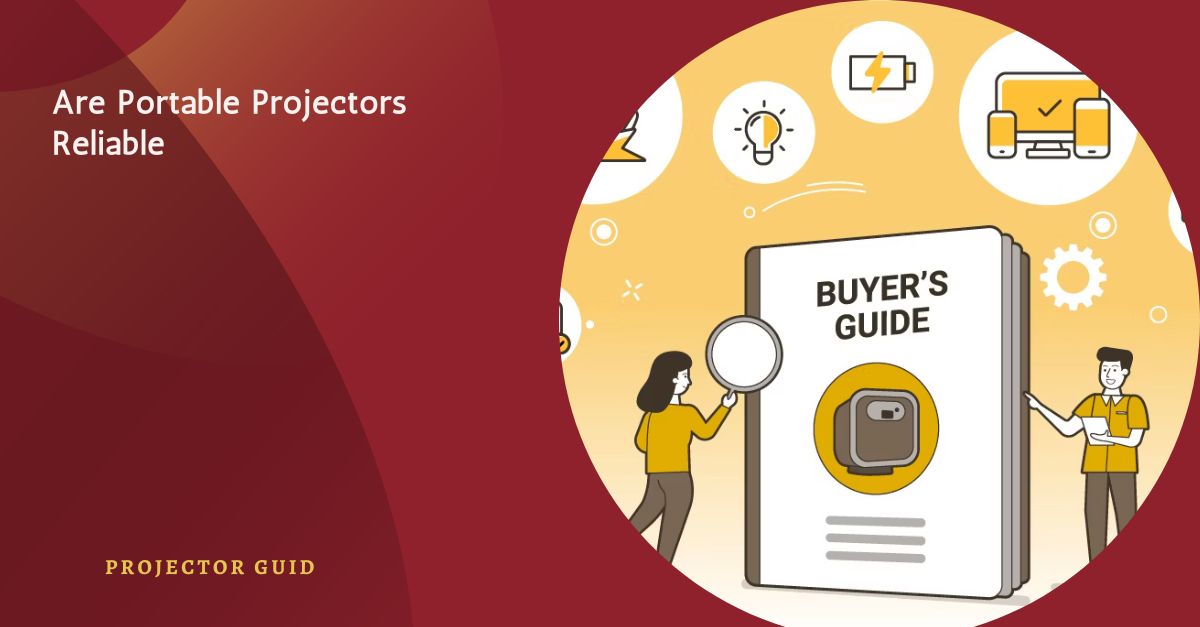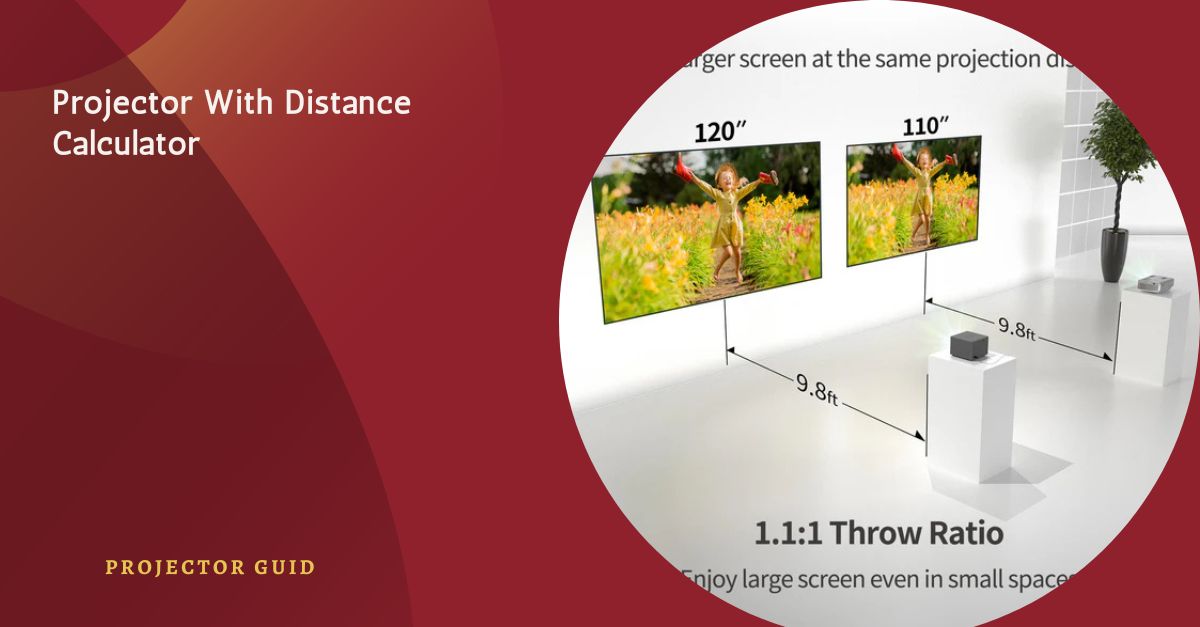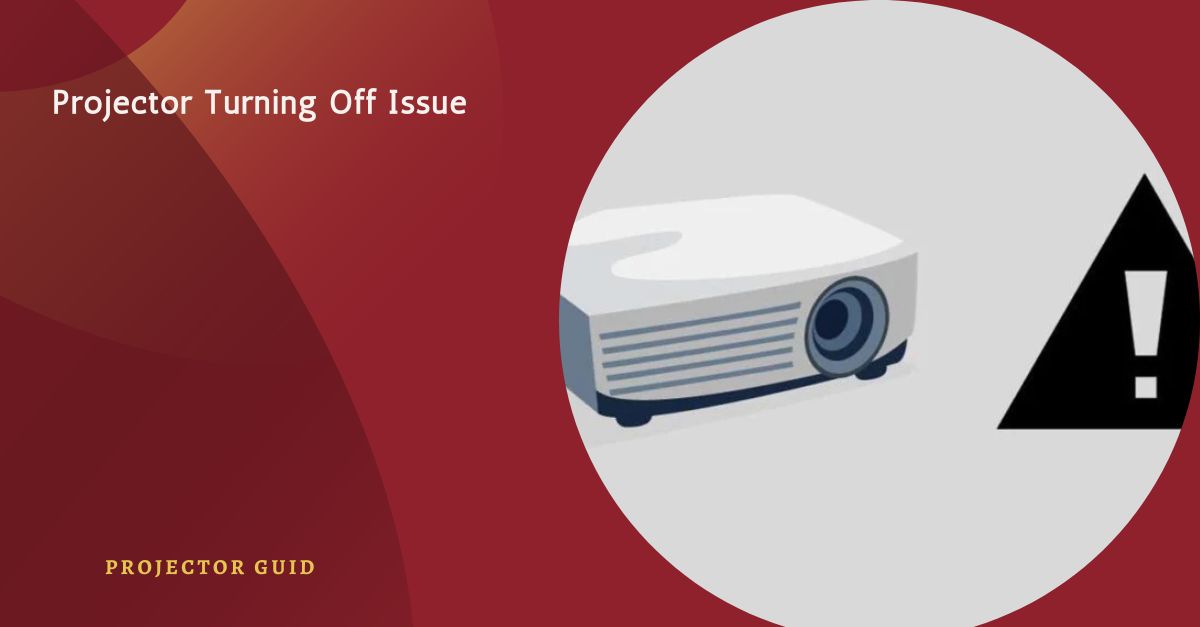I once set up my projector on angled wall, and the image looked weird and slanted. I adjusted the keystone settings and moved the projector a bit, which helped a lot. After some small tweaks, the picture looked clear and natural.
Using a projector on angled wall can cause distortion, but it’s fixable with the right adjustments. Features like keystone correction and proper placement help create a clear image. With a few tweaks, you can enjoy a sharp and balanced display.
Stay tuned with us as we share simple and effective tips for using a projector on angled wall. We’ll cover how to fix distortions, adjust settings, and get a perfect picture. Don’t miss out on these easy tricks to improve your setup.
Can You Use A Projector On An Angled Wall?
Yes, you can use a projector on angled wall, but the image may look slanted or stretched. This happens because the wall’s angle changes how the picture appears. Luckily, features like keystone correction and lens shift can help fix the shape and make the image look normal.
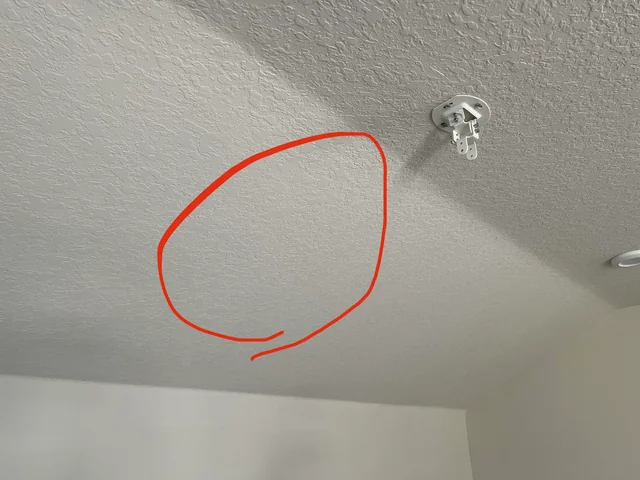
To get a clear picture with a projector on angled wall, you might need to adjust its position or use special settings. Simple tweaks can make a big difference, helping you enjoy a straight and sharp display without any distortion.
Will An Angled Wall Affect The Projector’s Image Quality?
Yes, an angled wall can change how a projector on angled wall displays the image. The picture may look stretched, slanted, or uneven because the wall isn’t flat. This can make it harder to get a clear and properly shaped image.
But you can fix this by using keystone correction or lens shift to adjust the picture. Moving the projector to a better position or using special settings can also help. With the right setup, a projector on angled wall can still show a clear and balanced image.
Read:Are Portable Projectors Reliable – Complete Guide!
How Do You Fix A Distorted Image On An Angled Wall?
A projector on angled wall can make the image look slanted or stretched, but there are simple ways to fix it. Adjusting the projector’s settings and position can help straighten the picture. Features like keystone correction and lens shift allow you to fix the image without moving the projector too much.
Easy Ways To Fix A Projector On An Angled Wall:
| Fix | How It Helps |
| Keystone Correction | Adjusts the image shape to fix slanted edges. |
| Lens Shift | Moves the image up, down, left, or right for better alignment. |
| Adjust Projector Position | Changing height or angle can improve the picture. |
| Use Projection Mapping | Customizes the image to fit the wall’s shape. |
| Use a Flat Screen | A screen instead of a wall reduces distortion. |
What Is Keystone Correction, And How Does It Help?
Keystone correction is a feature that helps fix a slanted or stretched image when using a projector on angled wall. If the projector is not straight in front of the wall, the picture may look uneven. Keystone correction adjusts the image shape, making it appear normal even if the projector is placed at an angle.

This feature is useful for improving image quality with a projector on angled wall. Many projectors have manual or automatic keystone settings, allowing you to fix the image without moving the projector. However, too much adjustment can slightly lower the picture quality, so it’s best to use keystone correction along with proper projector placement.
Can Lens Shift Fix Projection Issues On An Angled Wall?
Yes, lens shift can help fix image problems when using a projector on an angled wall. This feature lets you move the image up, down, left, or right without tilting the projector. Unlike keystone correction, which adjusts the image digitally, lens shift moves the lens itself, keeping the picture clear while fixing alignment issues.
Using lens shift with a projector on angled wall can make the image look straight and natural. It works best when combined with good projector placement. However, not all projectors have this feature, so it’s important to check if your projector supports lens shift before relying on it for adjustments.
Read: Do Projectors Need A Dark Room – Find Out Now!
How Can I Make The Image Look Straight On An Angled Wall?
A projector on angled wall can make the image look uneven or stretched, but there are simple ways to fix this. Adjusting the projector’s settings and position can help straighten the picture.
Features like keystone correction and lens shift allow you to fix the image without moving the projector too much. Using the right setup can improve clarity and make the image look natural.
Some Easy Ways To Make The Image Look Straight :
| Fix | How It Helps |
| Keystone Correction | Adjusts the image shape to fix slanted edges. |
| Lens Shift | Moves the image up, down, left, or right for better alignment. |
| Adjust Projector Position | Placing the projector at the right height and angle improves the picture. |
| Use a Projection Screen | A flat screen reduces distortion and improves image quality. |
| Projection Mapping Software | Customizes the image to match the wall’s angle. |
Should I Mount My Projector Or Use A Stand For An Angled Wall?
Deciding whether to mount or use a stand for a projector on angled wall depends on your setup and needs. Mounting the projector on the ceiling or wall keeps it steady and prevents movement, giving a consistent image. However, since the wall is angled, you may need to adjust keystone correction or lens shift to keep the picture straight and clear.
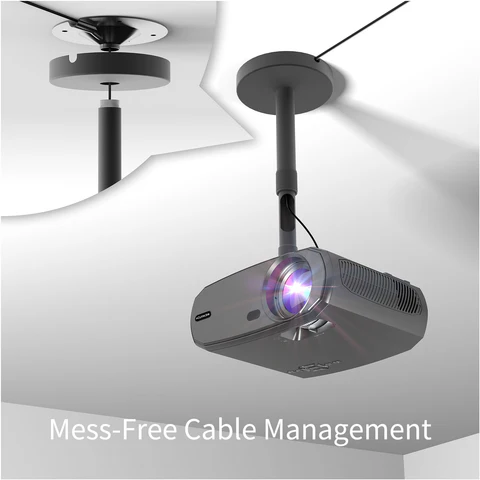
A stand offers more flexibility when using a projector on angled wall because you can easily change the height and angle. This is helpful if you need to move the projector often or test different positions. However, a stand may require frequent adjustments to keep the image aligned, especially if the projector gets bumped or shifted.
Do Short-Throw Projectors Work Better For Angled Walls?
Yes, a short-throw projector can be a good choice for a projector on angled wall because it needs less space to create a big image. Since it sits closer to the wall, there is less distortion, making it easier to get a clear picture. Many short-throw projectors also have keystone correction and lens shift, which help adjust the image for a better viewing experience.
However, using a short-throw projector on angled wall still requires proper setup. If the angle is too steep, the image may look stretched or uneven. Placing the projector on a steady surface or mount and adjusting the settings carefully can help create a straight and balanced image.
Read: Optoma Projector User Guide – Complete Guide!
Will A Higher-Resolution Projector Reduce Distortion?
A higher-resolution projector can make the image sharper and clearer, but it won’t fully fix distortion when using a projector on angled wall. The angle of the projection can still cause stretching or uneven edges. To get the best picture, you may need to adjust keystone correction, lens shift, or change the projector’s position for better alignment.
If you are using a projector on angled wall, combining high resolution with the right adjustments can improve image quality.
Some Simple Ways To Reduce Distortion:
| Fix | How It Helps |
| Higher Resolution | Creates a sharper and more detailed image. |
| Keystone Correction | Adjusts the image shape to fix slanted edges. |
| Lens Shift | Moves the image up, down, left, or right without tilting the projector. |
| Proper Positioning | Placing the projector at the right height and angle reduces stretching. |
| Projection Mapping Software | Helps adjust the image to match the wall’s angle. |
Is A Curved Projection Screen Better For An Angled Wall?
A curved projection screen can improve the viewing experience when using a projector on angled wall. Its shape helps distribute the image more evenly, reducing distortion and keeping the picture looking natural. This is helpful if the projector is placed at an angle, as the curve helps maintain focus and brightness across the screen.
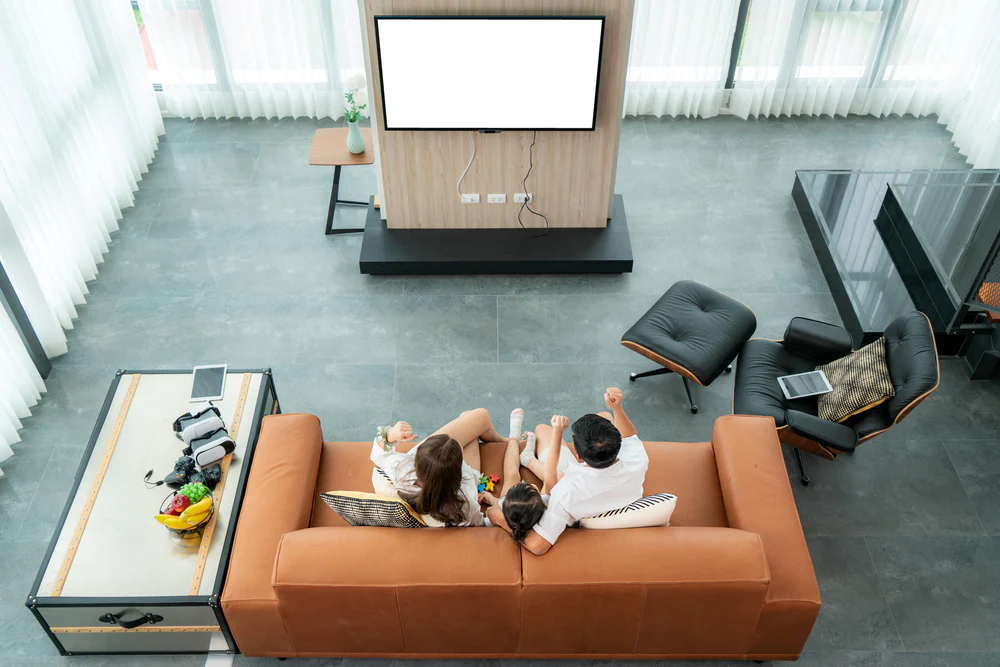
However, a curved screen is not always the perfect fix for a projector on angled wall. It works best when combined with features like keystone correction and lens shift to adjust the image properly. If the angle is too steep, the image may still look stretched. To get the best results, it’s important to adjust both the projector’s position and settings.
Can Projection Mapping Software Help On An Angled Wall?
Yes, projection mapping software can help when using a projector on angled wall. It allows you to adjust the image shape, fix distortions, and make the picture look straight. The software resizes and warps the image so that it appears correctly even if the projector is at an angle.
Using projection mapping software with a projector on angled wall makes setup easier and improves image quality. It removes the need for complicated manual adjustments and helps create a smooth, well-aligned display. Whether for home theaters or creative visuals, this software ensures a clear and balanced projection on angled surfaces.
Read: Best Distance For Projector Placement – Easy Guide!
Can Mirrors Be Used To Adjust Projection On An Angled Wall?
Yes, mirrors can help adjust the projection when using a projector on angled wall. By reflecting the image off a mirror before it reaches the wall, you can change its direction and improve alignment. This method reduces distortion and makes the picture look straighter without moving the projector.
Using mirrors with a projector on angled wall requires careful positioning for the best results. A high-quality flat mirror works best to keep the image clear.
Some Benefits And Challenges Of Using Mirrors:
| Feature | Effect |
| Fixes Angle Issues | Redirects the image for better alignment. |
| Saves Space | Allows flexible placement in small areas. |
| Improves Projection | Helps make the image look straighter. |
| Needs a Good Mirror | Low-quality mirrors can cause blurriness. |
| Requires Precise Setup | Positioning must be accurate for the best image. |
What Are The Best Projectors For Angled Wall Projection?
The best projectors for a projector on angled wall have keystone correction and lens shift features. These options help adjust the image shape so it looks straight without moving the projector. Short-throw and ultra-short-throw projectors are also a good choice because they create big images from a short distance, reducing distortion on slanted walls.
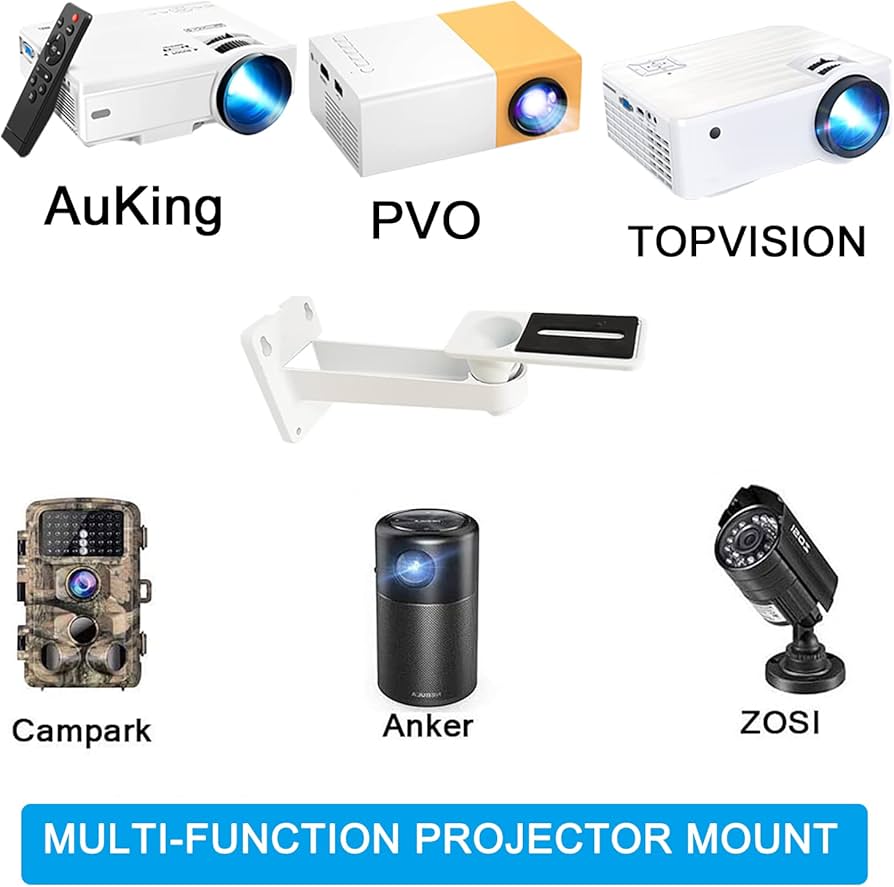
When picking a projector on angled wall, go for models with high resolution and adjustable focus to keep the picture clear. Some projectors also support projection mapping software, which helps fine-tune the image for tricky surfaces. If your room is bright, choose a high-lumen projector to keep the picture sharp and easy to see.
FAQs:
Q1. Can Projectors Project On An Angle?
Yes, a projector on angled wall can still work, but the image may look distorted. Using keystone correction and lens shift can help adjust the picture for a clear display.
Q2. Do Projectors Work On Uneven Walls?
A projector on angled wall or uneven surface may cause image warping. A smooth, flat screen or projection mapping software can help fix the issue.
Q3. Do You Need A Flat Wall For A Projector?
A flat wall is ideal, but a projector on angled wall can still work with adjustments. Keystone correction and proper positioning help align the image properly.
Q4. Can You Use A Projector On A Curved Wall?
A projector on angled wall or curved surface can work with special adjustments. Projection mapping software helps correct the image for a better viewing experience.
Q5. Can You Mount A Projector On An Angled Wall?
Yes, you can mount a projector on angled wall, but placement matters. A ceiling or adjustable mount with keystone correction ensures a proper image.
Q6. Does An Angled Wall Affect Projector Brightness?
A projector on angled wall may lose brightness due to uneven light reflection. Choosing a high-lumen projector can help maintain a clear and bright display.
Q7. What’s The Best Way To Align A Projector On An Angled Wall?
For a projector on angled wall, use keystone correction, lens shift, and proper positioning. These adjustments help straighten the image and improve quality.
Q8. Do All Projectors Support Angled Wall Projection?
Not all projectors work well on an angled surface. A projector on angled wall should have keystone correction and lens shift for the best results.
Q9. How Do You Avoid Distortion With A Projector On An Angled Wall?
To fix distortion with a projector on angled wall, adjust keystone settings and lens shift. Using a flat screen or projection mapping software can also help.
Conclusion:
A projector on angled wall can still deliver a clear image with the right adjustments. Using keystone correction, lens shift, or projection mapping helps fix distortions. A brighter projector can improve visibility, while a smooth surface enhances clarity.
Mounting options and proper alignment play a key role in achieving the best results. With the right setup, a projector on angled wall can work just as well as a standard projection.
Read More:
- Common Projector Issues And Fixes – Easy Steps!
- Infocus Projector User Guide – Easy Tips!
- Hdcp 2.2 Workaround For Projector – Find Easy Solution!
- Can Normal Projector Show 3d Movie – Find Out Now!
- Projector Red Color Problem – Solve It In Minutes!
- Projector With Distance Calculator – Find Your Perfect Screen Setup!
- Projector Turning Off Issue – Resolve This!
- Projector Human Design Type – Complete Tips!

